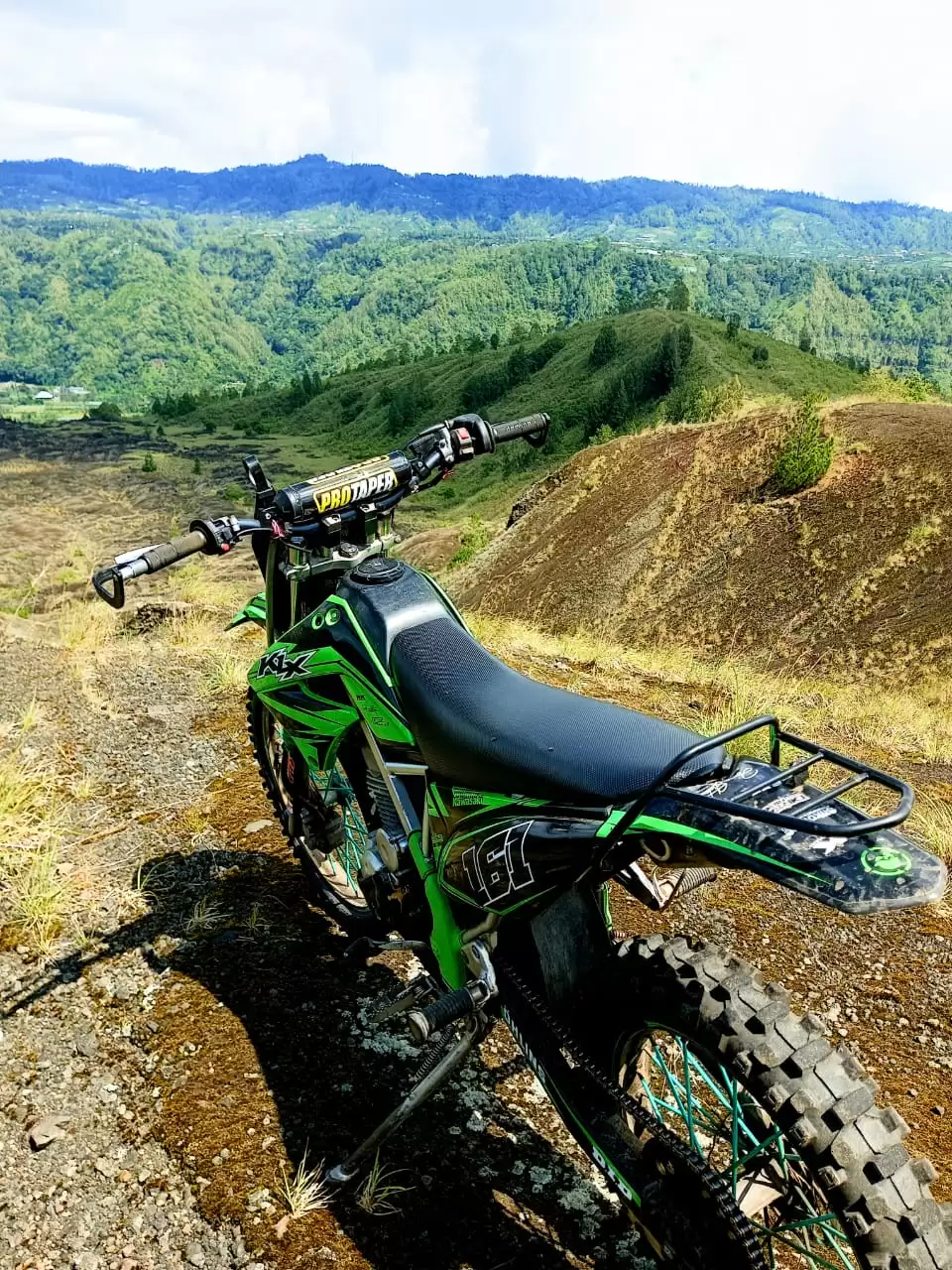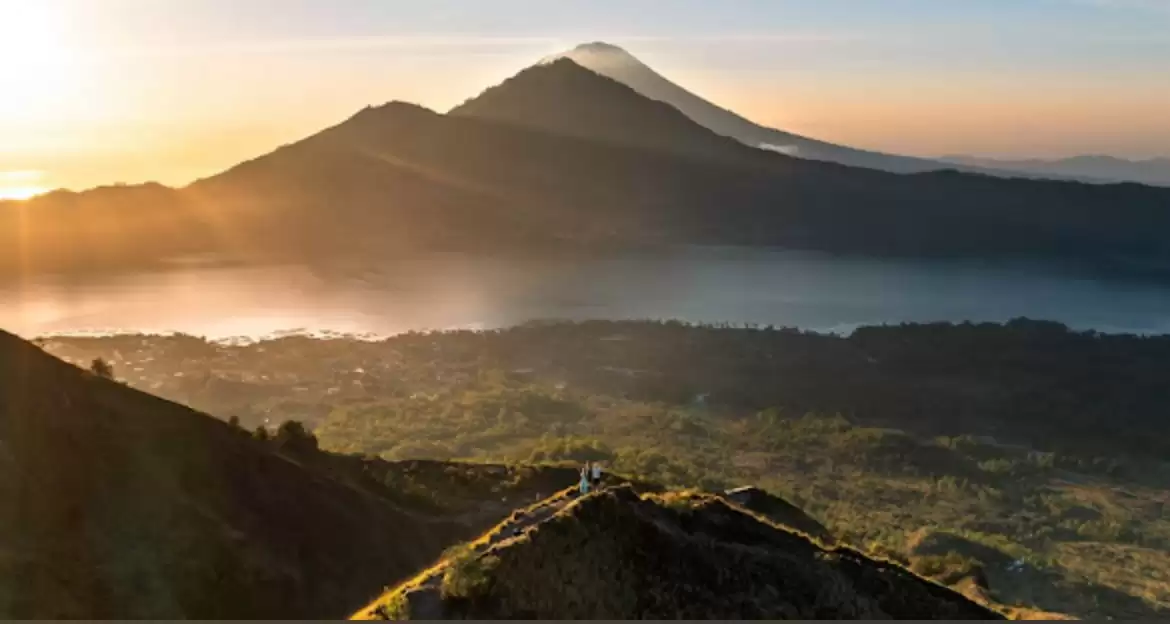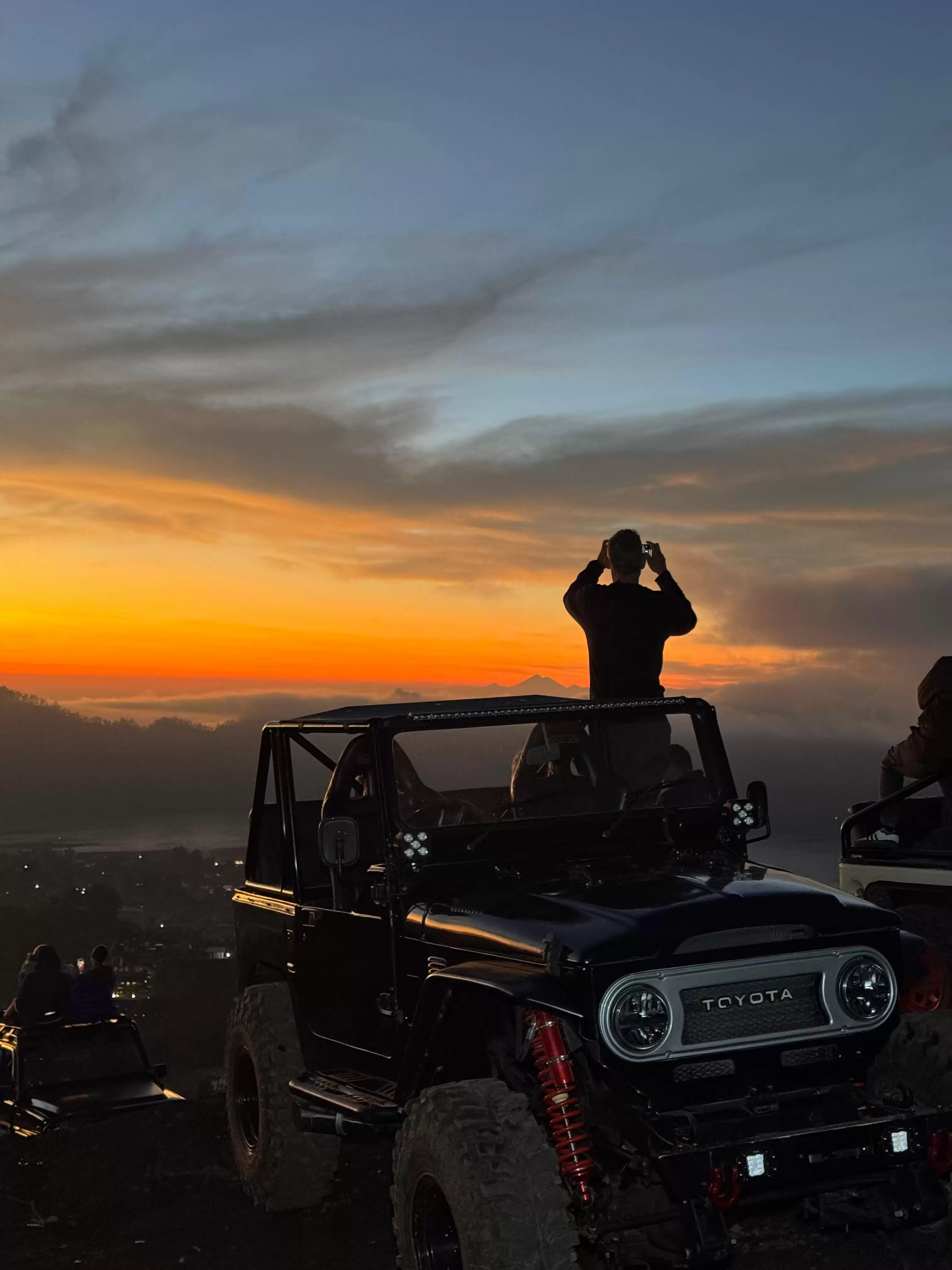How to Check Mount Batur Weather: Reliable Sources

Planning a Mt Batur jeep tour? Checking the weather ahead of time is key — especially if you're hoping for a clear sunrise or sunset. Mountain weather can be unpredictable, but a few trusty sources can help you decide whether to pack that extra jacket or expect epic views. Here are 5 reliable ways to check Mt Batur’s weather:
1. UNDERSTANDING MOUNT BATUR'S WEATHER PATTERNS
Seasonal variations for planning your hike
Timing your Mt Batur adventure right can seriously level up your experience. While the volcano is open year-round, the seasons in Bali do make a difference — especially when it comes to sunrise views and overall comfort. Here’s what to expect during each part of the year, so you can plan your jeep tour or hike like a pro:
- Dry Season (April – October): This is the best time to visit Mt Batur. Skies are clearer, trails are drier, and you’ve got a much better chance of catching that picture-perfect sunrise. It's also cooler in the mornings — great for early tours.
- Wet Season (November – March): The views can be hit or miss, with cloudier skies and a higher chance of rain (especially in the early morning or late afternoon). That said, it’s usually still worth going! Tours often still run, and the landscape can be lush and dramatic.
- Shoulder Months (March & November): These can be a bit of a gamble, but sometimes offer a sweet spot — fewer tourists, slightly cooler weather, and the chance for clear skies if you get lucky.
Temperature ranges throughout the year
Mt Batur’s temperature is quite different from Bali’s hot and humid beach weather — especially if you’re heading up before sunrise. Since it’s over 1,700 metres above sea level, things can get surprisingly chilly at the top! Here’s a breakdown of what to expect throughout the year:
- Dry Season (April – October): Early mornings can dip to around 12–17°C (54–63°F), especially between June and August. It warms up quickly after sunrise, reaching around 25°C (77°F) by mid-morning.
- Wet Season (November – March): Mornings are generally milder, ranging between 16–20°C (60–68°F). Humidity increases slightly, and there may be more cloud cover, but it’s still cooler than the lowlands.
What this means for you:
- Bring a light jacket or hoodie — it can feel cold, especially during the sunrise wait.
- Layer up! Once the sun rises, you'll probably want to peel off a layer or two.
- Gloves or a beanie might be a good idea if you're visiting between June and August and are sensitive to the cold.
Don’t let Bali’s tropical vibes fool you — Mt Batur’s summit can surprise you with its cool temperatures. Dress smart, and you’ll be able to enjoy the views without shivering through your sunrise coffee.
Rainfall patterns and monsoon seasons
While Bali is a year-round destination, rainfall patterns can definitely affect your Mt Batur jeep tour experience — especially if you’re hoping for clear sunrise views. Mt Batur’s location in the highlands means it’s often cooler and sometimes wetter than coastal areas, so it’s good to know what to expect before you go.
- Wet Season (November – March): This is Bali’s monsoon season. Expect higher humidity, cloudy skies, and a greater chance of rain — especially in the early morning or late afternoon. Tours still run, and some mornings can be surprisingly clear, but it’s smart to bring a lightweight rain jacket just in case.
- Dry Season (April – October): This is the best time for a Batur adventure. Skies are mostly clear, rainfall is minimal, and you’ve got a better shot at those perfect post-card worthy sunrises. July and August are dry and cool, making them the most popular months to visit.
Best months for clear summit views
If your goal is to catch those jaw-dropping views from the top of Mt Batur — think fiery sunrises, sea of clouds, or golden-hour lava fields — timing your trip right can make all the difference. While the mountain is open year-round, some months offer much better chances of clear skies than others.
- June to August: These are the prime months for mountain clarity. Cool, dry mornings mean crisp air, fewer clouds, and the highest chance of getting that postcard-perfect sunrise. It’s also peak travel time, so expect more visitors — but the scenery makes it worth it.
- May and September: These shoulder-season months are still in the dry season but usually come with fewer crowds. You’ll still have a good shot at clear skies if you get an early start.
2. OFFICIAL WEATHER SERVICES FOR MOUNT BATUR
Indonesian Meteorology, Climatology, and Geophysics Agency (BMKG)
If you're after the most accurate, up-to-date local weather info for Mount Batur, the Indonesian Meteorology, Climatology, and Geophysics Agency (BMKG) is a solid go-to. It’s Indonesia’s official weather authority — and while it’s not as flashy as some international apps, it gives you insight straight from the source.
Why use BMKG for your Mt Batur tour planning?
- Local data: BMKG pulls information from stations across Bali, so you’re getting island-specific forecasts — not generic “Bali = sunny” updates.
- Real-time weather alerts: Useful for spotting sudden changes, especially during the rainy season.
- Forecast details: Includes temperature, humidity, visibility, and even wind levels — handy for sunrise jeep tours at higher altitudes.
How to use it: Visit BMKG’s official site and search for Kintamani or Bangli (the region where Mt Batur is located). It may not be as sleek as some apps, but it’s trustworthy and updated often.
AccuWeather's dedicated Mount Batur forecasts
If you're looking for an easy-to-use and reliable way to check Mount Batur conditions, AccuWeather’s dedicated forecasts are a great pick. Unlike broader forecasts that just lump all of Bali together, AccuWeather lets you drill down to specific areas like Kintamani — right where Mount Batur is located.
- Location-specific forecasts: Search for “Kintamani” or “Mount Batur” for tailored conditions in the actual area you’ll be touring — not just Denpasar or Ubud.
- Hourly updates: Super useful for checking what the weather’s doing around sunrise or sunset. You’ll get a clearer sense of whether to expect clouds, fog, or showers at exact times.
- Feels-like temps: It might read 18°C, but wind or fog can make it feel colder — AccuWeather helps you prep properly.
- Radar + cloud cover: Great for getting a visual of approaching weather systems, especially in the changeable mountain climate.
3. MOBILE APPS FOR REAL-TIME WEATHER UPDATE
The Weather Channel app features for mountain conditions
If you're prepping for a Mount Batur jeep tour and want a straightforward, user-friendly app to check the weather, The Weather Channel app is a solid choice. While it’s widely used for general forecasts, it also offers a few handy features that work surprisingly well for mountain conditions — especially when you zoom in on the Kintamani region, where Mt Batur is located.
- Hourly and 15-minute forecasts: Great for pinpointing your sunrise or sunset window — you’ll know if clouds are rolling in just before you set off.
- Feels-like temperature: Useful when the actual temp is 18°C, but it feels much cooler thanks to mountain breeze or humidity.
- Sunrise & sunset times: Clearly shown each day within the app, so you can plan your tour timing to perfection.
- Rain alerts and radar: Helpful during the rainy season, especially for spotting incoming showers or tracking clear patches.
- Air quality & visibility info: Handy extras that can affect your view at the summit, particularly during smoky or hazy periods.
Windy.com for wind patterns crucial for hiking safety
Windy.com isn’t just for weather geeks — it’s one of the most reliable tools out there for checking Mount Batur’s wind patterns, which can be super helpful when planning your hike or jeep tour. In mountain areas like Batur, strong gusts or sudden changes in wind direction can make conditions feel colder, affect visibility, or even create a safety concern near the summit.
- Real-time wind speed & direction maps: Zoom in on Mount Batur to see how strong winds are, and where they’re coming from – this is especially useful at sunrise or during the cooler months when wind chill can sneak up on you.
- Altitude-specific data: You can check wind speed at different elevations — ideal for understanding how conditions might change at the summit versus the base.
- Detailed forecast layers: View temperature, cloud cover, rain prediction, and fog visibility all in one place, with a beautifully visual layout.
- Reliable forecast models: Windy pulls from top global weather models (like ECMWF and GFS), giving you a more accurate look than many standard weather apps.
Mountain-specific apps with Batur forecasts
- Meteoblue: One of the few weather platforms that gives mountain-specific forecasts including fog risk, wind chill, and sunrise clarity. Just search “Mount Batur” or “Gunung Batur” for detailed hourly updates.
- Mountain-Forecast.com: Made for hikers and climbers, this site breaks down weather by elevation so you’ll know what to expect at the summit vs the base. It shows wind speeds, temperature, cloud cover, and potential snowfall (yes, it can get *that* cold sometimes).
- Yr.no: A Norwegian app known for its accuracy in mountainous and remote areas. Search for “Batur” or nearby villages like “Kintamani” for a clear weather snapshot — even includes precipitation graphs.
4. LOCAL SOURCES FOR AUTHENTIC WEATHER INFORMATION
Trekking companies' weather updates and advisories
One of the most underrated (and reliable!) sources for Mount Batur weather updates? The trekking companies and local guides themselves. They’re on and around the mountain every day, so they know exactly how conditions shift — sometimes even better than the apps do. If you're heading up for a jeep tour or sunrise hike, checking in with your operator is one of the smartest moves you can make.
- Real-time info: Most operators offer same-day updates via WhatsApp or text — perfect if you’re unsure whether to go ahead with your tour.
- Experience with microclimates: Mt Batur’s summit can have clear skies even when it’s raining at the base — local guides know these patterns well and can tell you when it’s worth the climb.
- Safety alerts: In cases of volcanic activity or extreme weather, established guides are the first to know and will adjust routes or advise you to stay safe.
- Flexible planning: If weather conditions don’t look ideal, guides can often help reschedule or suggest better time slots — especially helpful during wetter months.
Local guide services with daily condition reports
When it comes to real, on-the-ground weather info for Mount Batur, local guide services are your best friends. Many experienced guides offer daily condition reports — straight from the mountain itself. Whether you're joining a sunrise jeep tour or trekking to the summit, tapping into their local knowledge can help you make smarter decisions (and avoid waking up at 3AM for nothing).
5. WEBCAMS AND SOCIAL MEDIA FOR VISUAL WEATHER VERIFICATION
Sometimes, the best way to know what’s really happening at Mount Batur isn’t through a weather app — it’s by seeing it with your own eyes. That’s where live webcams and local social media accounts come in handy. If you're planning a trek or jeep tour and want to double-check summit conditions, visual tools are a game changer.
Where to find visual weather updates:
- Live Webcams: Some hotels and cafes in Kintamani or Toya Bungkah share live streams or mountain-view footage. Try Googling “Mount Batur live cam” or checking their YouTube channels.
- Instagram: Search hashtags like #mountbatur or #baturjeep, or check accounts of local guided tour businesses in the area for Stories and Reels posted daily.
- Facebook local groups: Look for communities like “Mount Batur Sunrise Tour” or “Batur Jeep Experience” — guides and travellers often post daily photos and updates here.





 English
English Russia
Russia